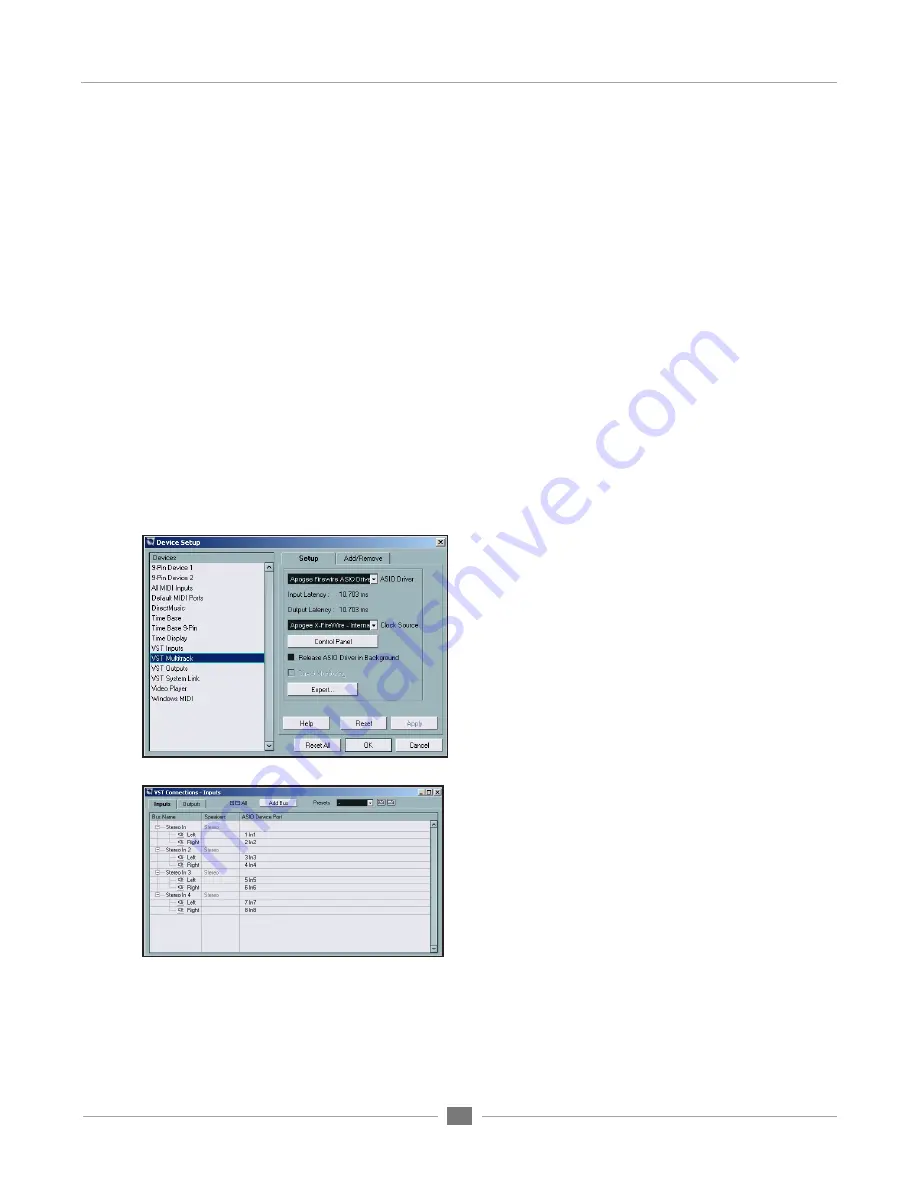
APOGEE ELECTRONICS
16
AMBus FireWire card
– User’s Guide
Configuring Audio Applications for use with
AMBus FireWire equipped Apogee Interfaces
In general, configuring the “major” audio applications (such as Apple Logic, Steinberg Nuendo or
Cubase,MOTU Digital Performer or Cakewalk Sonar 4) consists of identifying a Device Setup window in
the app and selecting the Apogee host interface as the hardware device providing I/O. On the other hand,
configuring “utility” audio applications such as Windows Media Player (on Windows XP) or iTunes (on OS
X) consists of selecting the Apogee host interface in an operating system control panel. The following four
configuration examples are given below:
Configuring Steinberg Nuendo on Windows XP
Configuring Windows Media Player on Windows XP
Configuring Apple Logic on OS X
Configuring iTunes on OS X.
From these examples it should be possible to deduce configuration details for the specific audio
application you’re using. Please consult operating instructions for the audio application.
Configuring Steinberg Nuendo on Windows XP
After verifying proper operation of the AMBus FireWire
card with the Apogee 1394 Audio control panel, open
Nuendo.
Under Nuendo’s
Devices
drop-down menu, select
Device Setup
then
VST Multitrack
.Set
ASIO Driver
to
Apogee FireWire ASIO Driver
.
It’s possible to access the Apogee 1394 Audio control
panel by clicking on the
Control Panel
button.
Under Nuendo’s
Devices
drop-down menu, select
VST
Connections
.
Create Input and Output busses as needed and assign
ASIO Device Ports
to the newly created busses.



















